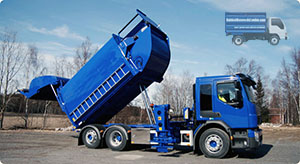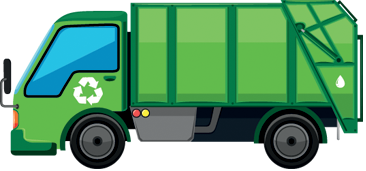Waste collection as a procedure, has been around for centuries. Mankind was quick to realise that waste hade to be collected, taken away and disposed of, but the means through which this was done were quite rudimentary and inefficient for many centuries. Prior to the nineteen hundreds, horse drawn wagons and carts were the rubbish collection vehicles of choice used in built up areas. However this basic waste collection service was only available in very few places, and accessible by very few people.
The first properly organised rubbish removals date back to the early nineteen twenties, when the horse cart gave way to the fuel powered truck. The nineteen twenties saw the utilisation of the first ever open-top rubbish truck in Western Europe. This particular type of waste removal vehicle however was quickly replaced by a covered rubbish removal truck as the latter proved more suitable and user-friendly so to say. Covered trucks contained the foul odours emitted by waste and also prevented spills caused by sudden stops, sharp turns and gusts of wind. Covered rubbish trucks quickly became the standard in Western European countries. Their functionality and usefulness was soon appreciated by most of the states on the North American East Coast. Eventually, the use of covered rubbish trucks spread throughout the whole of North America.
 Having a suitable waste collection vehicle was invaluable help for waste management personnel. A purpose built, covered rubbish removal truck which didn’t spill its load along the way also meant fewer diseases, infections and overall better hygiene in public areas. Although rubbish collection methods were improving and becoming more efficient, there was one area of waste management that was lagging behind in development, and that was actual collection. In other words, rubbish people did not have the means to physically pick up, toss and bring back down the bins or rubbish containers quickly and without spilling them. This was made even more difficult when rubbish people had to collect large volumes of junk or when the container was simply too heavy to lift by one man.
Having a suitable waste collection vehicle was invaluable help for waste management personnel. A purpose built, covered rubbish removal truck which didn’t spill its load along the way also meant fewer diseases, infections and overall better hygiene in public areas. Although rubbish collection methods were improving and becoming more efficient, there was one area of waste management that was lagging behind in development, and that was actual collection. In other words, rubbish people did not have the means to physically pick up, toss and bring back down the bins or rubbish containers quickly and without spilling them. This was made even more difficult when rubbish people had to collect large volumes of junk or when the container was simply too heavy to lift by one man.
It is interesting to note, that the first ever attempts to mechanise the actual waste collection process were nearly ten years after the first purpose built, covered rubbish trucks were put into use. Eventually though many engineers and innovative thinkers put their heads together in order to devise and implement a range of different waste pick up methods.
Waste Collection Vehicles – Evolution & Methods
by Joanna Burns September 16, 2014

